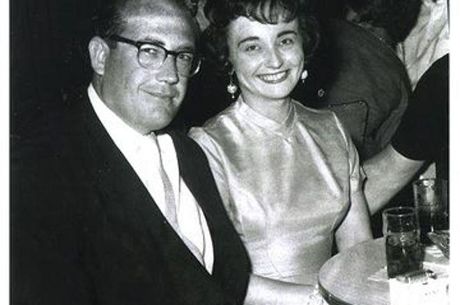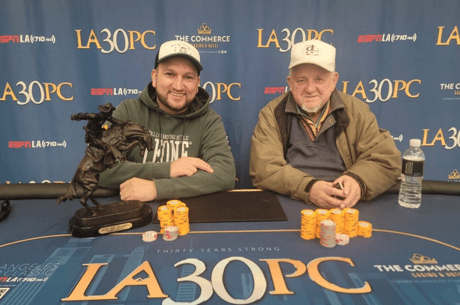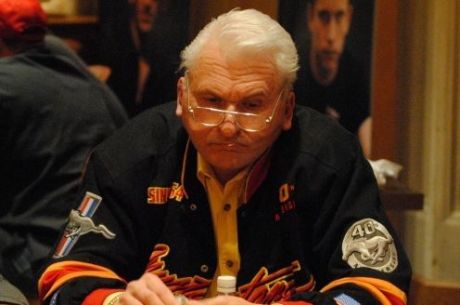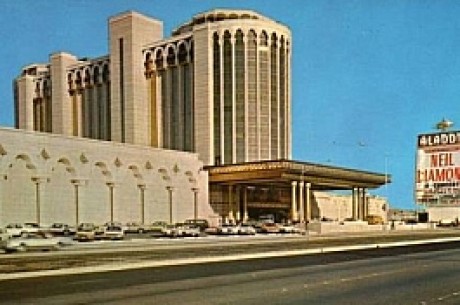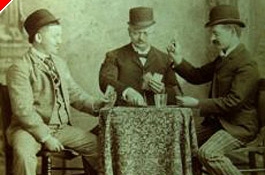From the Poker Vaults: Jimmy Chagra — The Second Biggest Fish of All Time, Part 1

The first time Jimmy Chagra entered a Las Vegas casino he brought with him several suitcases stuffed with cash and not the least bit of sense. The man gambled as if the money he wagered had simply fallen from the sky one day, and in a way it had — during the 1970s Jimmy Chagra was one of the most notorious drug dealers in the world, responsible for importing even more narcotics into the country than his rival Rex Cauble.
How does one rise to such a position? Growing up in El Paso, Texas, a rough-and-tumble border town where drug smugglers were practically considered heroes, certainly helped. Chagra’s inherent waywardness also contributed — he was the black sheep of his family. While his two brothers, Lee and Joe, chose to study law, Jimmy dropped out of high school and took to the streets. By the time he was 20, he’d become accomplished at smuggling contraband back and forth across the border. He favored marijuana because the penalties for smuggling it weren’t as stiff as those involving other drugs, but eventually he began importing large shipments of cocaine as well.
Chagra’s business proved to be incredibly lucrative. He made more money selling drugs than anyone could spend in a lifetime, and yet he still tried. During his heyday he claimed to be a professional gambler, but the truth was that he lost far more than he ever won. It wasn’t uncommon for him to lose $1 million in a single night playing craps.
Las Vegas was just about the only place in the country that could handle that kind of action, and it quickly became Chagra’s favorite destination. He usually arrived in town carrying several massive footlockers stuffed with cash, which he stored in the count room at Caesars Palace while he gambled. For much of the 1970s Caesars was his home away from home — he actually lived there for a stretch while he was having a house built for himself in Las Vegas. His relationship with the casino was so close he reportedly once loaned it $10 million for 24 hours after the baccarat tables experienced an extended run of bad luck.
Chagra was equally generous to those who worked for the casinos. He once tipped a cocktail waitress $10,000 for bringing him a complimentary bottle of water. On another occasion after enjoying a rare win at the craps table he gave a croupier a $600,000 tip.
When such extravagance began to attract the wrong kind of attention, Chagra switched his allegiance from Caesars to Binion’s Horseshoe, and it was there that he discovered the thrill of wagering massive amounts of money against the best poker players in the world. The way he played, it seemed as if he really didn’t care if he won or not, making him a dream come true for the high-rolling players who set up shop at Binion’s during that era. The list of those who took sizeable chunks of Chagra’s fortune away from him is as long as it is distinguished — “Amarillo Slim” Preston, Doyle Brunson, Jack Straus, Chip Reese, Puggy Pearson, and Johnny Moss all fattened their bankrolls with Chagra’s easy money.
Playing against Chagra did not come without some risk, however. Like Andy Beal three decades later, Chagra liked to put pressure on his opponents the only way he knew how, by constantly demanding that the stakes be raised. The minimum buy-in for one of the games he typically sat in was $50,000, but his savvy opponents usually bought in for much more because Chagra was known to bet $20,000 blind, in his words, “just to liven the game up a little.” When Chagra was in the game, it wasn’t unheard of for there to be over $2 million sitting on the table.
As overmatched as he was at the poker table, Chagra was an equally easy mark on the golf course where he would routinely lose as much as $400,000 in a single round. Far from discouraging him, he was always ready to come back for more. “He would shake it off and say, ‘Let’s play another round tomorrow,’” said Jack Sheehan, the Las Vegas writer who is currently working on a screenplay about Chagra’s life.
One man who beat Chagra just as badly in both arenas — the golf course and the poker room — was Puggy Pearson. “I beat him and I beat him and I beat him,” Pearson once said. “I probably won $600,000 from him. He tried to play a lot of everything. He was in the dope business and he wanted to look like a gambler. I beat him at poker and golf and I might have played some bumper pool with him. He lost a lot of money to those of us who were in Vegas at the time. He lost well into the millions for sure…. Yeah, Jimmy was a good boy.”
For most of the latter half of the 1970s, Jimmy Chagra served as a meal ticket for the best rounders in the world, and, despite losing millions of dollars to them, he seemed to be enjoying every minute of it. He was a real-life Tony Montana, living the high life, doing as he pleased, but we all know how Scarface ended. Chagra’s demise, while not quite as dramatic as Montana’s, was every bit as predictable.





